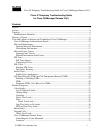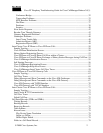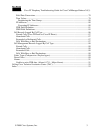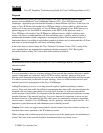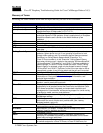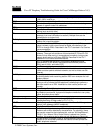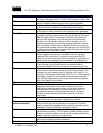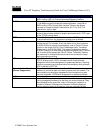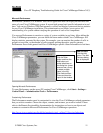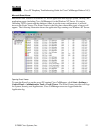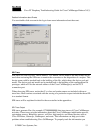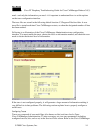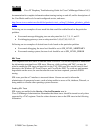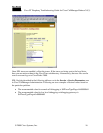
Cisco IP Telephony Troubleshooting Guide for Cisco CallManager Release 3.0(1)
© 2000 Cisco Systems, Inc. 8
Glossary
PRI
PRI is Primary Rate Interface. Primary rate access consists of a single
64-Kbps D channel plus 23 (T1) or 30 (E1) B channels for voice or data.
PSTN
Public Switched Telephone Network. General term referring to the
variety of telephone networks and services in place worldwide.
Q.931
ITU standard that describes ISDN signaling. The H.225.0 standard uses
a variant of Q.931 to establish and disconnect H.323 sessions.
RAS
Registration, Admission, and Status protocol. Protocol used in the
H.323 protocol suite for discovering and interacting with a gatekeeper.
Route Filter
A route filter can be used not only to restrict dialing, but also to identify
a subset of a wildcard pattern (when using the @ wildcard in the North
American Dialing Plan). For example, it could be used to block the
dialing of 900 area codes. In can also be used in conjunction with
Partitions and Calling Search Spaces to set up complex rules. For
example, assume you have three user groups established, Executive,
Staff, and Guest. A Route Filter can allow the Executive user group to
dial international numbers; while the Staff user group can only dial local
numbers or long distance calls; and the Guest user group can only dial
local numbers, 911, and 800 numbers.
Route Group
A Route Group is a list of one or more gateways or ports on gateways
that are seen as equal access. It is analogous to a trunk group in
traditional PBX terminology. For instance, you may have two PRI
circuits to the same carrier that can be used arbitrarily. A gateway (or a
particular port on a gateway) can only be added to one Route Group.
Route List
Formerly called Route Point, the Route List allows Cisco CallManager
to hunt through a list of Route Groups in a configured order of
preference. Multiple Route Lists can point to the same Route Groups.
Route Pattern
A specific number or, more commonly, a range of dialed numbers that
will be used to route calls to a device (such as a Cisco Access DT-24+
Gateway or a voice-capable router) or indirectly via a Route List. For
example, 1XXX signifies 1000 through 1999. The ’X’ in 1XXX signifies a
single digit, a wildcard. There are other such wildcards (such as @, .,!,
etc). A Route Pattern does not have to be unique within a partition as
long as the Route Filter is different.
RRJ
Registration Reject.
RTP
Real-Time Transport Protocol. One of the IPv6 protocols. RTP is
designed to provide end-to-end network transport functions for
applications transmitting real-time data, such as audio, video, or
simulation data, over Multicast or Unicast network services. RTP
provides services such as payload type identification, sequence
numbering, time stamping, and delivery monitoring to real-time
applications.
SEP
Selsius Ethernet Phone. Acronym that precedes MAC Addresses on
Cisco IP Phones, and represents a unique device identifier.
Silence Suppression (Voice
Activation Detection)
Silence Suppression allows a Cisco IP Phone to detect the absence of
audio and does not transmit packets over the network. The sound
quality may be slightly degraded but the connection may also use less
bandwidth. Silence Suppression is disabled by default.
SNMP
Simple Network Management Protocol. Network management protocol
used almost exclusively in TCP/IP networks. SNMP provides a means
to monitor and control network devices, and to manage configurations,
statistics collection, performance, and security.
SQL
Structured Query Language. International standard language for
defining and accessing relational databases.
T1/CAS
T1 is a di
g
ital WAN carrier facilit
y
, transmittin
g
DS-1-formatted data at



